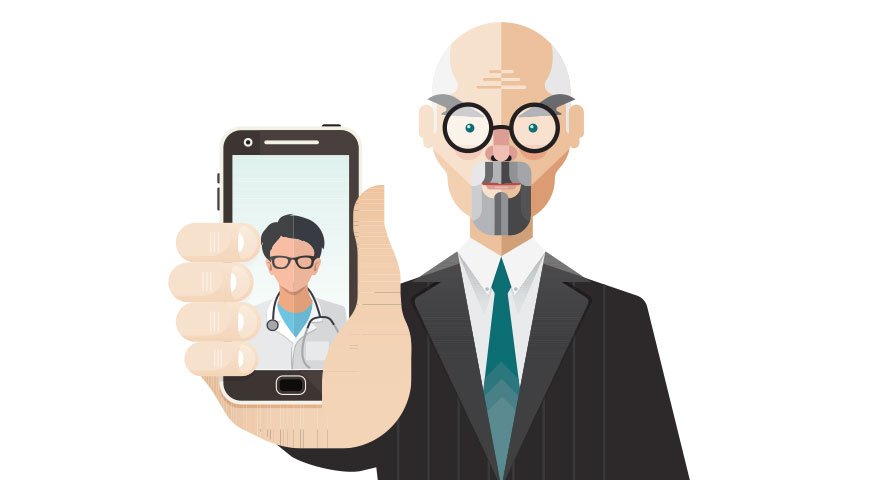You prepare for the future with the best lawyers, wealth managers and insurance advisors. But what about your health? Seeing a primary-care physician once a year hardly takes advantage of the top information and care available today, particularly when it comes to mitigating risk factors for chronic conditions such as heart disease, cancer, diabetes and vascular disease. With these leading causes of death in mind, here are 12 steps that, in conjunction with talking to your doctor, can help you live both better and longer.
01. JOIN A CONCIERGE MEDICINE PRACTICE
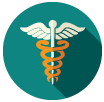 In addition to providing patients with on-demand personalized care, concierge doctors see far fewer people than do regular primary-care physicians, affording them the time to keep up with the latest in medicine and technology. When it’s not an emergency situation, concierge doctors work with patients to find the world’s best therapies. One example: Leslie Michelson, CEO of medical firm Private Health Management, says many of the most effective cancer drugs are covered by health insurers only for later-stage treatment of specific cancers because drug companies have tested them in, and the FDA has approved them for, that population. “But the most knowledgeable physicians”—often the ones in concierge practices—“know that these drugs can be used successfully in earlier stages and for other cancers.”
In addition to providing patients with on-demand personalized care, concierge doctors see far fewer people than do regular primary-care physicians, affording them the time to keep up with the latest in medicine and technology. When it’s not an emergency situation, concierge doctors work with patients to find the world’s best therapies. One example: Leslie Michelson, CEO of medical firm Private Health Management, says many of the most effective cancer drugs are covered by health insurers only for later-stage treatment of specific cancers because drug companies have tested them in, and the FDA has approved them for, that population. “But the most knowledgeable physicians”—often the ones in concierge practices—“know that these drugs can be used successfully in earlier stages and for other cancers.”

02. CARRY A PRESCRIPTION MEDICAL PACK
 Executives who travel a lot should always carry a custom portable medical kit containing prescription drugs frequently needed in emergencies so that doctors can start immediate treatment. “As emergency physicians, we know that the single biggest risk in a medical situation is a delay in starting effective treatment,” says Dr. Dan Carlin, a Worth columnist whose telemedicine practice, WorldClinic, offers this service. “It’s particularly true for problems like cardiac angina, trauma and allergic anaphylaxis, where minutes are often the window between life and death.”
Executives who travel a lot should always carry a custom portable medical kit containing prescription drugs frequently needed in emergencies so that doctors can start immediate treatment. “As emergency physicians, we know that the single biggest risk in a medical situation is a delay in starting effective treatment,” says Dr. Dan Carlin, a Worth columnist whose telemedicine practice, WorldClinic, offers this service. “It’s particularly true for problems like cardiac angina, trauma and allergic anaphylaxis, where minutes are often the window between life and death.”
03. GET HIP TO WEARABLE TECH
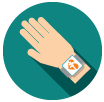 Companies like FitBit and Jawbone have created trendy tools that track your sleep patterns and physical movement, but there are more advanced apps and devices being developed that connect patients directly to doctors, minimizing the need for in-office tests. Carlin’s clients at WorldClinic, for example, use an AliveCor heart monitor that records an electrocardiogram and heart rate in 30 seconds. That information is sent instantly to the clinic through the AliveECG app on a patient’s phone. A patient’s BMI, blood pressure and sugar levels can also be sent this way through the use of smart scales and wireless blood-pressure and glucose monitors.
Companies like FitBit and Jawbone have created trendy tools that track your sleep patterns and physical movement, but there are more advanced apps and devices being developed that connect patients directly to doctors, minimizing the need for in-office tests. Carlin’s clients at WorldClinic, for example, use an AliveCor heart monitor that records an electrocardiogram and heart rate in 30 seconds. That information is sent instantly to the clinic through the AliveECG app on a patient’s phone. A patient’s BMI, blood pressure and sugar levels can also be sent this way through the use of smart scales and wireless blood-pressure and glucose monitors.
04. EXERCISE TO SAVE YOUR BRAIN
 Everyone knows that exercise promotes cardiac health, but Dr. Zachary Palace, a new york geriatrician, says it can also help preserve cognitive function by keeping the neural pathways active. Just 20 minutes of exercise a day three times a week has been shown to enhance cardiovascular and brain fitness—and you can do it without a gym. A circuit of exercises that use your body weight for resistance such as push-ups, squats, reverse crunches and mountain climbers will go a long way toward improving muscle tone as well as flexibility. Consult your doctor or personal trainer to put together an adequate exercise regimen.
Everyone knows that exercise promotes cardiac health, but Dr. Zachary Palace, a new york geriatrician, says it can also help preserve cognitive function by keeping the neural pathways active. Just 20 minutes of exercise a day three times a week has been shown to enhance cardiovascular and brain fitness—and you can do it without a gym. A circuit of exercises that use your body weight for resistance such as push-ups, squats, reverse crunches and mountain climbers will go a long way toward improving muscle tone as well as flexibility. Consult your doctor or personal trainer to put together an adequate exercise regimen.

05. PRACTICE RHYTHMIC BREATHING
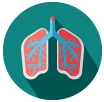 Reducing stress, says dr. Elizabeth Ochoa, chief psychologist in the department of psychiatry at New York’s Mount Sinai Beth Israel, should involve strategies that increase self-awareness, such as taking slow and rhythmic breaths, rather than short, gulping breaths. Breathing exercises are one of the most effective strategies to combat stress, which, if left unchecked, can exacerbate serious conditions such as heart disease, high blood pressure and diabetes.
Reducing stress, says dr. Elizabeth Ochoa, chief psychologist in the department of psychiatry at New York’s Mount Sinai Beth Israel, should involve strategies that increase self-awareness, such as taking slow and rhythmic breaths, rather than short, gulping breaths. Breathing exercises are one of the most effective strategies to combat stress, which, if left unchecked, can exacerbate serious conditions such as heart disease, high blood pressure and diabetes.
06. EAT MORE FISH
 If there is one dietary change that Rebecca Solomon, director of clinical nutrition at Mount Sinai Beth Israel in New York, recommends for living longer, it is to consume more oily fish, such as salmon and mackerel. They are rich in omega-3 fatty acids, which have been shown to decrease the risk of arrhythmias, lower triglycerides, which are associated with an increased risk for heart disease, and may increase levels of HDL, the good cholesterol that protects against heart disease.
If there is one dietary change that Rebecca Solomon, director of clinical nutrition at Mount Sinai Beth Israel in New York, recommends for living longer, it is to consume more oily fish, such as salmon and mackerel. They are rich in omega-3 fatty acids, which have been shown to decrease the risk of arrhythmias, lower triglycerides, which are associated with an increased risk for heart disease, and may increase levels of HDL, the good cholesterol that protects against heart disease.
07. CHECK YOUR HEART WITH A CT ANGIOGRAPHY
 This test helps to diagnose any narrowing or obstruction of the arteries, an aneurysm, deep vein thrombosis, pulmonary embolism or other vascular condition, says Leslie Michelson of Private Health Management, and proactive monitoring of significant medical risks is less common than it should be. Sophisticated scans like CT angiographies take about 10 minutes, require very little radiation exposure and provide the best imaging of blood vessels in the body. Doctors often don’t recommend these or other important tests; you have to ask.
This test helps to diagnose any narrowing or obstruction of the arteries, an aneurysm, deep vein thrombosis, pulmonary embolism or other vascular condition, says Leslie Michelson of Private Health Management, and proactive monitoring of significant medical risks is less common than it should be. Sophisticated scans like CT angiographies take about 10 minutes, require very little radiation exposure and provide the best imaging of blood vessels in the body. Doctors often don’t recommend these or other important tests; you have to ask.
08. GET A COMPREHENSIVE VASCULAR INFLAMMATION PANEL
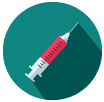 Cholesterol isn’t the only biomarker to determine the risk of heart disease, but it’s often treated that way. According to Dr. Marc Penn, founder and chief medical officer of the Cleveland HeartLab, 50 percent of patients who suffer heart attacks actually have their cholesterol levels under control through diet and exercise at the time of a cardiac event. Penn’s clinic offers a battery of tests—myeloperoxidase, high-sensitivity CRP, PLAC test, oxidized LDL, urinary microalbumin/creatinine ratio and F2-isoprostanes/creatinine ratio—that examine two urinary biomarkers and four blood markers to better assess one’s risk of heart attack or stroke.
Cholesterol isn’t the only biomarker to determine the risk of heart disease, but it’s often treated that way. According to Dr. Marc Penn, founder and chief medical officer of the Cleveland HeartLab, 50 percent of patients who suffer heart attacks actually have their cholesterol levels under control through diet and exercise at the time of a cardiac event. Penn’s clinic offers a battery of tests—myeloperoxidase, high-sensitivity CRP, PLAC test, oxidized LDL, urinary microalbumin/creatinine ratio and F2-isoprostanes/creatinine ratio—that examine two urinary biomarkers and four blood markers to better assess one’s risk of heart attack or stroke.
09. OUTFIT YOUR HOME WITH TELEMEDICINE SYSTEMS
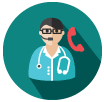 These devices can be installed in homes, planes and yachts to allow face-to-face communication with a physician at any time. That immedicacy is particularly important if you’re monitoring chronic diseases such as diabetes or obstructive pulmonary disease. Steve Normandin, president of Chelmsford, Mass.-based AMD Global Telemedicine, says available equipment includes everything from heart monitors to portable X-ray machines and HD-quality live video conferencing.
These devices can be installed in homes, planes and yachts to allow face-to-face communication with a physician at any time. That immedicacy is particularly important if you’re monitoring chronic diseases such as diabetes or obstructive pulmonary disease. Steve Normandin, president of Chelmsford, Mass.-based AMD Global Telemedicine, says available equipment includes everything from heart monitors to portable X-ray machines and HD-quality live video conferencing.
10. HAVE YOUR GENOME SEQUENCED
 When done for yourself and your close relatives, this procedure can identify inherited or somatic mutations in your system. Your doctor can order a DNA sequence for you, or you can go straight to a gene-sequencing company such as the San Diego-based Illumina. The results may lead to changes in recommended diet, the identification of medications and anesthesia you should avoid, and the development of personal prevention or early detection strategies for breast, skin, colon and other cancers. “If there is an unusual disease that develops in one member of the family, having the DNA of all family members stored might enable physicians to more rapidly and reliably diagnose it,” says Michelson.
When done for yourself and your close relatives, this procedure can identify inherited or somatic mutations in your system. Your doctor can order a DNA sequence for you, or you can go straight to a gene-sequencing company such as the San Diego-based Illumina. The results may lead to changes in recommended diet, the identification of medications and anesthesia you should avoid, and the development of personal prevention or early detection strategies for breast, skin, colon and other cancers. “If there is an unusual disease that develops in one member of the family, having the DNA of all family members stored might enable physicians to more rapidly and reliably diagnose it,” says Michelson.
11. GET A PET SCAN FOR ALZHEIMER’S
 If you’re genetically at risk for Alzheimer’s, a PET scan of the brain may help detect it early by showing the presence of abnormal clumps of proteins and plaques, an indication of Alzheimer’s. The results aren’t always clear and need to be interpreted with great care, but early detection of Alzheimer’s can significantly increase the number of treatment options.
If you’re genetically at risk for Alzheimer’s, a PET scan of the brain may help detect it early by showing the presence of abnormal clumps of proteins and plaques, an indication of Alzheimer’s. The results aren’t always clear and need to be interpreted with great care, but early detection of Alzheimer’s can significantly increase the number of treatment options.
12. USE MOUSE AVATARS FOR CANCER DRUG TESTING
 This experimental approach for personalized cancer treatments costs about $12,000. Private labs such as Champions Oncology in New Jersey can breed mice to determine which drugs might best treat a specific patient’s cancer. A tumor from the patient is grafted under the skin of an immune-deficient mouse, allowing various drugs to be tested on the animal to determine which might best fight the disease. As of now, the testing takes months—so the avatars may be best suited for people with early-stage and nonaggressive cancers.
This experimental approach for personalized cancer treatments costs about $12,000. Private labs such as Champions Oncology in New Jersey can breed mice to determine which drugs might best treat a specific patient’s cancer. A tumor from the patient is grafted under the skin of an immune-deficient mouse, allowing various drugs to be tested on the animal to determine which might best fight the disease. As of now, the testing takes months—so the avatars may be best suited for people with early-stage and nonaggressive cancers.

